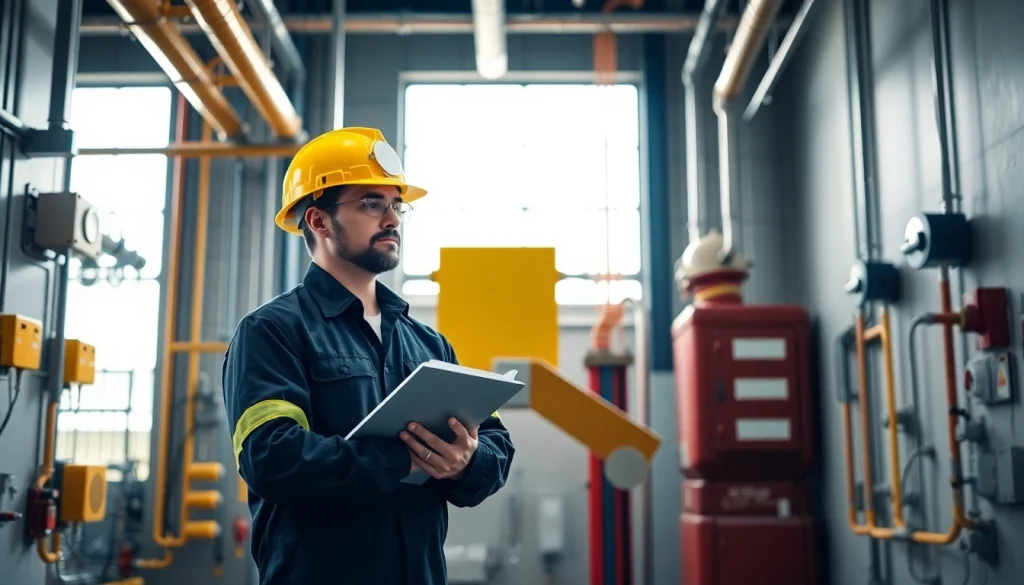
Understanding Fire Protection Basics
Fire protection is an essential aspect of life safety and property preservation across various types of environments. It’s about more than just having a fire extinguisher handy; it involves systems, strategies, and regulations designed to mitigate the potentially devastating effects of fire. Effective fire protection requires a comprehensive understanding of various fire prevention measures and safety technologies. In this extensive guide, we’ll explore the intricate details of fire protection, including its basic principles, active and passive systems, safety strategies tailored to specific environments, and the future trends shaping the industry.
What is Fire Protection?
Fire protection refers to the various systems, strategies, and practices employed to minimize the potential for fires, control their impact, and ensure the safety of individuals and properties. The concept encompasses proactive measures, such as risk assessment and preventative design, alongside reactive systems like alarms and extinguishing devices. The ultimate goal is to save lives and reduce property damage from fire incidents.
Types of Fire Protection Systems
Fire protection falls into two primary categories: active and passive systems. Active fire protection systems require human intervention but work automatically, often engaging in response to fire detection. Conversely, passive fire protection measures are integrated into a building’s design to slow fire growth and prevent fire spread.
- Active Systems: These include sprinkler systems, fire alarms, and extinguishers, all designed to detect and extinguish fires as they occur.
- Passive Systems: These include fire-resistive walls, compartments, and materials that prevent flames from spreading between areas.
Importance of Fire Safety Regulations
Fire safety regulations are essential for ensuring that buildings are constructed with appropriate safety measures in place. Codes are guided by organizations like NFPA (National Fire Protection Association), whose guidelines help to create environments that prioritize safety and risk reduction. Compliance with such regulations not only mitigates risk but also can significantly lower insurance premiums and safeguard investments.
Active Fire Protection Methods
Fire Sprinkler Systems
Fire sprinkler systems are perhaps the most effective active fire protection method available. By discharging water when heat is detected, these systems can control or extinguish fires before they escalate. Sprinkler systems can be designed to serve individual areas, like offices or kitchens, or can cover entire buildings depending on the risk assessment. Regular inspection and maintenance of these systems are crucial to ensure effectiveness.
Fire Extinguishing Equipment
Portable fire extinguishers are crucial for immediate fire control. Different types of extinguishers target various fire classes—Class A for ordinary combustibles, Class B for flammable liquids, etc. Understanding how to choose the correct extinguishing agent is vital. For instance, an ABC powder extinguisher can handle a variety of fire types.
Fire Detection Technologies
Modern fire detection systems include smoke detectors, heat detectors, and combination devices. These technologies play a critical role in early fire detection, alerting building occupants and notifying emergency services. Innovations in this area include integration with building automation systems, enabling remote monitoring and automatic fire department notifications.
Passive Fire Protection Solutions
Fire-Resistant Materials
Using fire-resistant materials in construction can significantly enhance a building’s overall fire safety. This includes the application of fire-rated wall assemblies, floors, ceilings, and doors. These materials are designed to withstand exposure to flames for a specified duration, significantly delaying the spread of fire and providing occupants more time to evacuate safely.
Compartmentalization Techniques
Compartmentalization is a crucial aspect of fire safety design. This technique involves creating barriers that contain fire and smoke in defined areas to prevent their spread across a building. Proper compartmentalization not only protects human life but also reduces the economic impact on property by isolating fire damage.
Managing Building Layout for Safety
The layout of a building can significantly affect fire protection strategies. Designing for safe evacuation routes and ensuring access to fire protection equipment can enhance overall safety. Incorporating clear signage, accessible stairwells, and minimizing the use of hazardous materials in the design phase are some effective practices.
Fire Protection in Different Environments
Residential Fire Protection
Home fire safety often begins with education about fire hazards and prevention methods. Installing smoke alarms on every floor and fire extinguishers in kitchens and garages, alongside an established escape plan, are vital measures families should take. Regular drills help residents become familiar with escape routes, reducing panic during an emergency.
Commercial Fire Safety Strategies
In commercial settings, fire protection strategies must account for more complex environments. This includes conducting regular fire risk assessments, ensuring compliance with local fire codes, and training employees in fire safety and evacuation procedures. Business continuity planning also plays an important role should a fire occur, allowing companies to recover quickly.
Fire Protection in Industrial Settings
Industries that deal with hazardous materials must implement rigorous fire protection strategies, including detailed emergency response plans. The use of specialized fire suppression systems—such as foam suppression for flammable liquids—is common. Regular drills and equipment checks are essential within these environments to ensure employee safety and regulatory compliance.
Best Practices and Future Trends
Regular Maintenance and Inspection
Consistent maintenance of fire protection systems is crucial for their efficacy. This includes inspecting alarms, testing sprinkler systems, and confirming that fire extinguishers are charged and unobstructed. Creating a regular inspection schedule ensures that equipment remains functional and compliant with safety standards.
Training and Emergency Preparedness
Fire drills and training sessions are vital in ensuring that all occupants know what to do in a fire emergency. Companies should have structured training programs that include not only fire response but also education about recognizing potential fire hazards. Engaging employees in these practices fosters a culture of safety, which can significantly reduce risk.
The Future of Fire Protection Technologies
The future of fire protection looks promising with the advent of smart technologies and artificial intelligence. Advanced smoke detection systems that can differentiate between burning materials and false alarms, combined with IoT connected alarms, present opportunities for enhanced safety and automated emergency responses. As technology continues to evolve, so too will the methods and systems used in fire protection.





